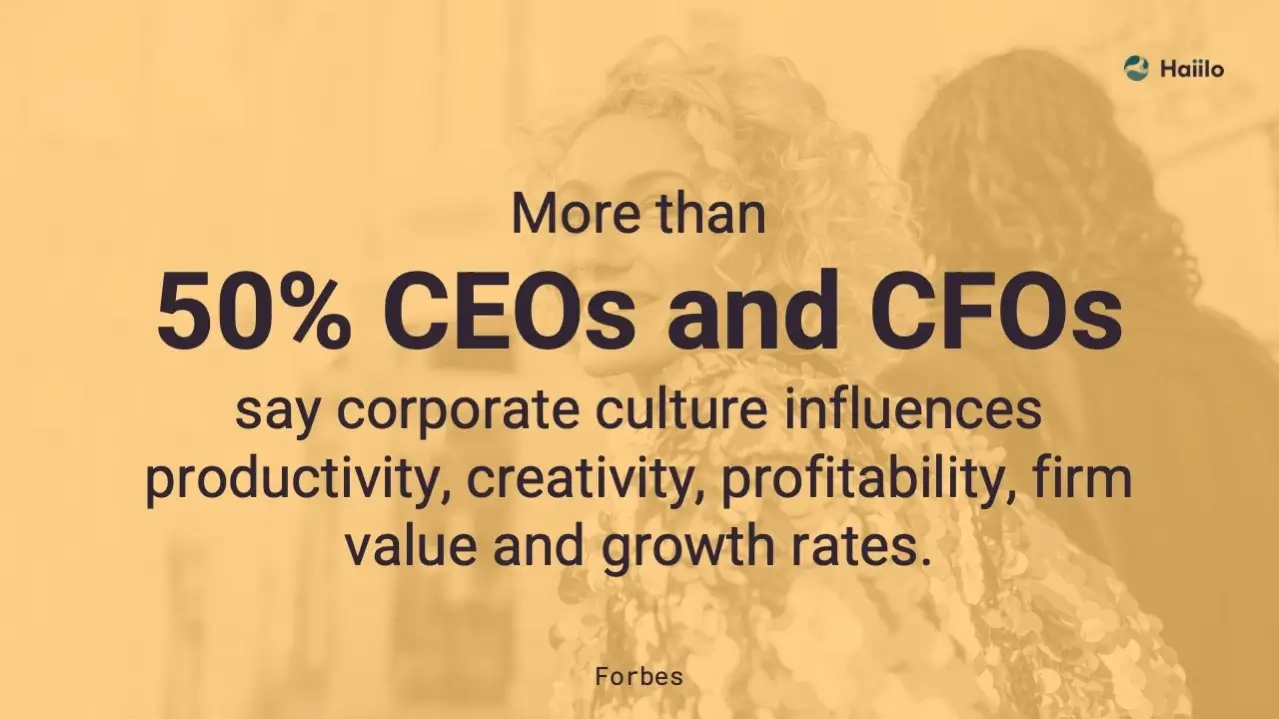Company culture is an ever-evolving facet of business that’s gained a lot of importance over the past decades. As we move further into a more flexible and modern system of working, employees are increasingly looking for their work to support them and foster positive experiences. Meetings and company culture go hand in hand, with the former being a huge part of how the latter establishes itself in a business.
Company culture has become so important to employees that 77% state they carefully consider culture before applying for a job. Beyond this, 56% of employees say that company culture is even more important than their salary when it comes to job satisfaction. If you’re looking to maximise employee satisfaction, then understanding company culture should be at the top of your list.
In this article, we’ll dive into the intricate relationship between meetings and company culture, demonstrating how you can use one to sustain and develop the other. We’ll touch on the benefits of meetings and pinpoint how to use them to create a holistic sense of an active and thriving culture at work.
Let’s dive right in.
What is office company culture, and how does it impact my business?
An office company culture is the core of an organisation’s identity. It represents the qualities you believe in, the characteristics you show, and the environment within which your employees work. A positive work culture is created by your employees and shared across your organisation.
Companies that have a strong work culture often have the most productive and engaged employees. In fact, 89% of top performers at work claim that their organisation has a positive work culture. As we know, so much of productivity at work is a reflection of the environment and general happiness of an employee.

- Boosted employee satisfaction
- Higher levels of productivity
- Increased revenue and growth
- Reduced employee churn
Employees are the beating heart of every organisation, with happy employees leading to a whole number of benefits. Without a doubt, if your company doesn’t currently have a strong sense of culture and support, this should be at the top of your list of priorities for the coming year.
How office meetings reflect and shape company culture
The average employee spends upwards of 33% of their week in office meetings. For managers and c-suite executives, this figure can climb upwards of 50%. With the huge time commitment that meetings take, this is a fantastic frontier where you can focus on establishing and disseminating a sense of culture.
For most employees, meetings are going to be the most time they spend directly with their coworkers. While they’re there to share ideas and progress projects onward, it’s also a great opportunity to get to know other people on a team. If managers make time to share information in these meetings, foster conversation, and ensure there is a sense of friendly support, businesses will be able to build up their culture one team at a time.
If your team doesn’t already have clear values set out, this is where you should begin. From there, ensure that the team leaders of each department are focusing on spreading these qualities. Whether it’s fun, fairness, transparency, or collaboration, ensure you embrace your foundational qualities and share them with your team.
This approach allows businesses a top-down approach to building company culture. Meetings provide a forum to share and demonstrate these changes. As the C-suite teaches managers and managers teach their teams, you’ll start to notice that your culture rapidly evolves. This was, partly, why over 70% of teams experienced a culture shift during the pandemic.
With more time in remote meetings, there was, ironically, more time for conversation and connection. Little by little, this helped to change the company culture tide.
How to use office meetings to meet company culture goals
In order to best use meetings to foster a sense of connection and reach your company culture goals, there are a number of strategies that you can employ.
Here are three top strategies you can use in meetings to boost company culture:
- Make Time For Conversation: Give space for genuine conversation between employees at the start or end of a meeting; all the more reason to end a few minutes early!
- Neutralise hierarchies: Teams should be able to talk about their experiences on a project equally, without fear of hierarchies. Give everyone the same amount of space to talk and power to share their ideas.
- Create an Open Space: Taking time to check in on your employees during meetings can be a great way of tracing stress through projects. Give your workers space to share how they’re feeling and ask for help if they need it.
By creating these open spaces for dialogue within meetings, you’ll be able to encourage your employees to participate in the company culture you’re looking to create. While this won’t happen overnight, meetings will rapidly convert into a leading tool for connection within your business.
Final thoughts
Office meetings and company culture are two parts of the workplace that are directly linked. Meetings can account for large portions of an employee’s week, suggesting that if you’re able to create a sense of positive culture here, you lay the foundation of a holistically positive culture. Across the board, employees that feel more comfortable at work experience higher satisfaction, increased company loyalty, and more.
By using the strategies we’ve outlined in this article, you’ll be able to use meetings as your central force for constructing an effective company culture. Over time, this will convert into one of your business’s leading strengths, helping you to excel in the modern workplace. If you’re looking to bring something new to your office and facilitate great team meetings, be sure to reach out to MEAVO today to hear more about our multi-person office pods.

